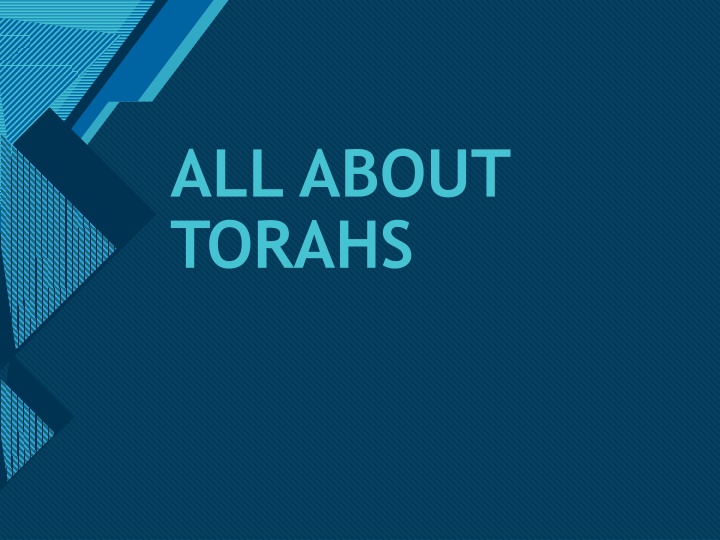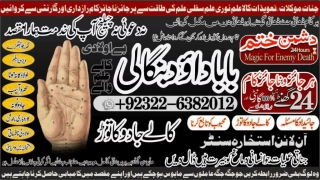ALL ABOUT TORAHS
Discover the significance of how to treat a Torah with respect and learn about ancient scrolls used for important texts. Explore the meaning of Torah and key terms associated with it, such as Sefer Torah, Chumash, and Aliyah.
Download Presentation

Please find below an Image/Link to download the presentation.
The content on the website is provided AS IS for your information and personal use only. It may not be sold, licensed, or shared on other websites without obtaining consent from the author.If you encounter any issues during the download, it is possible that the publisher has removed the file from their server.
You are allowed to download the files provided on this website for personal or commercial use, subject to the condition that they are used lawfully. All files are the property of their respective owners.
The content on the website is provided AS IS for your information and personal use only. It may not be sold, licensed, or shared on other websites without obtaining consent from the author.
E N D
Presentation Transcript
Click to edit Master title style ALL ABOUT TORAHS 1
Click to edit Master title style Torah Etiquette How do we treat a Torah? -- Like a holy person or person of high rank] Keep it in special place, upright Stand when it s standing Back away Do not take out the Torah or move locations without reading it -- Minimum of reading it 3x at any given location Burial if pasul No touching the parchment with hands 2
Click to edit Master title style Ancient Scrolls All ancient books were written on a scroll. Small scrolls had one wooden roller (like the Megillah). Torah was unusual; being so lengthy, it required a second wooden roller. In Hebrew, the wooden posts are called "Atzei Hayyim" (pl.), (Etz Hayim- sing.) 3
Click to edit Master title style What is Torah? The meaning of Torah encompasses law, teaching, morality and Divine revelation. Specifically refers to the first five books of the Bible (The Five Books of Moses) Torah" is sometimes used to refer to the entire body of Jewish religious writings: Written Torah Five Books of Moses Oral Torah rabbinic writings (Midrash, Mishnah, Talmud 4
Click to edit Master title style Public Reading of the Torah Started with Ezra Need a minyan Shabbat (2), Mondays, Thursdays, holidays, Rosh Hodesh Daytimes only (except Simchat Torah) Gabbaim check that it is read correctly 5
Click to edit Master title style Aliyot Number of aliyot rise in holiness: 3 aliyot on Shabbat minchah 4 aliyot on Rosh Hodesh 5 aliyot on holidays 6 aliyot on Yom Kippur 7 aliyot on Shabbat Maftir 6
Click to edit Master title style Torah Terms Sefer Torah (scroll) Chumash (study version of the Torah) Tikkun (side-by-side display for preparing Torah reading) Aliyah (honor of saying the blessings before and after a section of Torah reading) Trop marks: melody, punctuation, meaning If you discover Torah is pasul, have to stop and read from another Torah Yasher Koach (may your strength increase) Response: Baruch tiyeh, brucha tihyi, or Thank you! 7
Click to edit Master title style Torah Parts Crown Decorative; indicates the importance of the Torah. Belt (underneath) Ties the scroll together and protects it. Symbolic of sash worn by the High Priest in the days when the Temple stood in Jerusalem. Mantle covering for the Torah. Protects the parchment and reminds us of the tunic worn by the High Priest. Breastplate Decorative. Reminder of jewel-encrusted breastplate worn by the High Priest, which symbolized the 12 tribes of Israel. Yad pointer for keeping one s place, usually shaped like a right hand with a finger pointing. 8
Click to edit Master title style Housing the Torah Aron Ark or cabinet in which the Torah is kept. Parochet Curtain behind which Torah sits Ner tamid the light that is kept going at all times near the ark, symbolizing the eternity of the Torah s teachings. Tablets decorative, usually found above the ark Bimah raised platform in center or front of room for reading Torah Amud stand or table for reading Torah 9
Click to edit Master title style Columns Since the 1900s, the writing of a Torah has been standardized; there are 248 columns (ammud, ammudim) of 42 lines each. Each column is about 5 inches wide - enough space to write the longest word of the Torah: l'mishp'choteiheim - 'according to their families' Gen. 8:19, three times. A two inch margin separates the columns, and the bottom margin is generally wider than the top margin. In vav-Torahs almost every column begins with the letter 'vuv' (v), except the first column of the Torah, and the passage from Numbers (24:5) 'How goodly are your tents, O Jacob. The last three words of the Torah must be on their own line. 1 0
Click to edit Master title style Special Columns Certain passages are set off from the text: The Song at the Sea (Exodus 15) is written in an alternating brick pattern- reminiscent perhaps of waves. Moses' farewell poem (Deut. 32) is written like two pillars 1 1
Click to edit Master title style Materials Parchment made from skin of kosher animal Quill of a kosher bird, usually a turkey or goose. Special quill is used only for God's four letter name. Black ink, usually from family recipe Parchment sheets (yeriot) are sewn together using special thread made from the sinew or foot muscles (called giddin) of a kosher animal. Ends of the scroll are then attached to wooden rollers, atzei hayim, trees of life. 1 2
Click to edit Master title style The Writing Sofer or scribe: immerses in mikveh, washes hand, blessing, meditation Each letter written left to right, checked 3x with a Tikkun, by singing each word aloud. . Mistakes are excised by scraping the letters off, usually with sharp glass (not with a metal tool). A mistake in writing any of God's Names cannot be corrected; that parchment or column must be discarded. The flawed sheet would be stored in a Genizah, until it could be buried with other unuseable holy texts. 1 3
Click to edit Master title style Writing Process: More Details After preparing the materials, the sofer visits the mikveh in preparation for the holy work. He washes his hands and reciting the blessing, the Sofer begins with a meditation: 'I am hereby writing this Scroll of the Torah for the sake of the holiness of the Torah.' While at work the scribe is a vessel for God s holy words and must concentrate intensely and be aware of the holiness of the work. Then, he tests his quill on a scrap of parchment by writing the name 'Amalek' and crossing it out. By doing this, he is following the biblical injunction to blot out Amalek's name.] He must copy every single letter, and not write a single letter from memory. He copies from a master scroll that has been thoroughly checked to be an accurate copy, or more commonly today, from a printed Tikkun. Every letter must be clear and legible. Letters cannot be cracked, smudged, or touching one another. The rules for writing a Torah are very complex, and to become a sofer requires much study. The rules for writing Tefillin and Mezzuzah, although similar are not exactly the same. The Torah may be written at the pace of 3/4 of an amud each day, on average. There are 304,805 letters in the Torah; 248 columns and about 80 parchment pages in most Torahs, 1 4





![GET [✔PDF✔] DOWNLOAD✔ My Vegan Recipe Notebook for all your recipes - 6x9 i](/thumb/68090/get-pdf-download-my-vegan-recipe-notebook-for-all-your-recipes-6x9-i.jpg)










